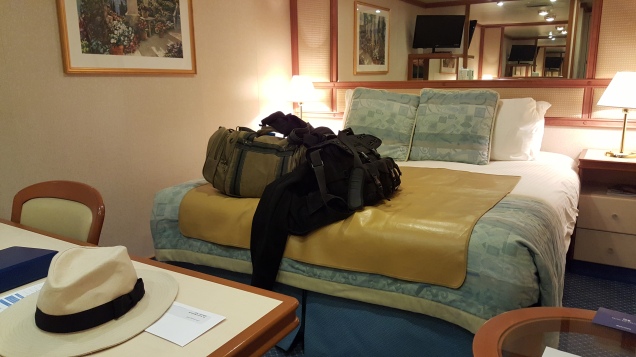Just a few days ago, my co-author Deborah Bolnick and I published a paper in the journal PaleoAmerica on the subject of haplogroup X and Native American population history. Rather than writing a blog summary of it (which has been my usual approach for publications), we decided to try something different: make the paper itself open access and respond here to a few questions about it that we’ve seen from a variety of sources. We hope that this approach will be helpful to interested readers!
What is the paper about?
We reviewed existing genetic data to answer the question: Could mitochondrial haplogroup X2a have been brought to the Americas by an ancient trans-Atlantic migration? This is a rather old question from the perspective of anthropological geneticists, but we’ve seen it appear in both academic publications and documentaries rather frequently. We thought it was worth revisiting in light of recent genetic publications.
Quite simply, we found that mitochondrial and genomic data do not support this migration hypothesis as the most plausible explanation for X2a’s presence in North America. Instead, the most parsimonious interpretation of the genetic data continues to be that haplogroup X2a had the same migration history and ancestry as the other founder Native American mitochondrial lineages (i.e., from Siberia). Based on the current evidence, we feel that there is no need to invoke a distinct origin for individuals bearing this lineage.
If’ you’d like another summary of the paper, Andy White wrote a very good blog post about it here.
Where can I get a copy?
We’ve sent a request to the publisher to make the paper open-access, and are waiting for them to process the request. We’ll update this post with a link as soon as the process is finalized. In the meantime, you can email us for a copy or find it on Jennifer Raff’s academia.edu page
How can you say that this proves once and for all that all Native Americans have exclusively Beringian ancestry when you haven’t sequenced all of them? Isn’t that unscientific?
We don’t say that. This work presents our best interpretation of all the genetic evidence currently available that are relevant to this question. In fact, we end the paper saying:
It is of course possible that genetic evidence of an ancient trans-Atlantic migration event simply has not been found yet. Should credible evidence of direct gene flow from an ancient Solutrean (or Middle Eastern) population be found within ancient Native American genomes, it would require the field to reassess the “Beringian only” model of prehistoric Native American migration. However, no such evidence has been found, and the Beringian migration model remains the best interpretation of the genetic, archaeological, and paleoclimate data to date.
We don’t think it’s likely that new evidence will suddenly crop up showing another source of ancestry for Native Americans, but it remains a formal, albeit remote, possibility. Should such evidence be found, it will require us to reexamine our models. But we can’t incorporate hypothetical results into our interpretations. That would be unscientific.
Doesn’t skeletal data contradict the Beringian hypothesis? What about the very early Paleoindians whose skulls look physically different from later and contemporary Native Americans? Aren’t they proof that Native Americans have European ancestry?
The skeletal data show changes over time in the cranial morphology of ancient Native American populations. It’s true that comparisons of skull shapes were, for a very long time, how anthropologists studied genetic relationships between populations. However, over the last few decades, we’ve developed the technology to assess biological relationships between individuals and populations by comparing genomes. It’s generally acknowledged that this is a more precise, direct means of assessing ancestry than morphology, which can be influenced by environmental, developmental, and cultural factors.
Furthermore, the genomes of several of the Paleoindians with differently shaped crania have been examined, and they show no evidence of different ancestry than later or contemporary Native Americans. For example, Kennewick Man, who we discuss in the paper, exhibited what some have described as “Caucasoid” cranial features. However, his overall genetic affinities group him with Siberians/East Asians, not Europeans. And his mitochondrial haplogroup is the most basal lineage of X2a so far observed. This result shows that X2a—and this Paleoindian cranial morphology—are compatible with Siberian ancestry.
Why the skulls of the earliest inhabitants of the Americas look different from the later indigenous inhabitants is a very interesting question. We suspect it has to do with evolutionary forces like selection or drift acting on morphology over millennia. Current genomic research just doesn’t show evidence that they had different ancestry from later Native American groups.
Isn’t it pretty well proven that Clovis technologies are descended from Solutrean technologies?
No. The majority of archaeologists think that the similarities between the Clovis and Solutrean points are either spurious or coincidental. Very, very few archaeologists interpret the data as supporting the Solutrean hypothesis. We don’t see the genetic evidence as supporting the Solutrean hypothesis either.
Archaeologists were wrong about the “Clovis First” hypothesis, so doesn’t that mean that you’re wrong too?
Why? These are two separate models. The model of Beringian genetic ancestry of Native Americans is not dependent on the Clovis First hypothesis; in fact, the same evidence from which the “Beringian Pause” model was developed—early coalescence dates of mitochondrial lineages and ancient DNA data—was an important component in overturning the Clovis First model.
In science, any hypothesis is falsifiable, and any model is provisional pending contradictory data. The overturning of the Clovis First model is a great example of the process working as it should.
Isn’t it unfair to critique the Solutrean hypothesis before it’s been fully “fleshed out?” There’s bound to be more data supporting it soon!
Any hypothesis is open to testing, otherwise it’s not scientific. And there’s no “waiting period” to protect a hypothesis until it’s gathered enough data to make it immune to criticism. This argument is a species of special pleading—no other idea in archaeology is treated this way.
What about the signal of “West Eurasian” ancestry seen in Native American genomes? Does it support a trans-Atlantic migration?
This finding has led to a lot of confusion among non-geneticists, and we address it in some detail in the paper. To summarize: Raghavan et al. (2014) and Rasmussen et al. (2014) studied the genomes of the Siberian Mal’ta individual and the Anzick-1 individual, respectively, and they found that a portion of their ancestry (between 14-38%) was derived from a population that also contributed alleles to the contemporary inhabitants of West Eurasia. Notably, the contemporary European gene pool appears to have emerged quite recently—within the last 8,000 years—as a result of significant migration and admixture events. We don’t know what the genomes of Solutrean peoples looked like, since none have been sequenced yet, but from these findings we predict that they would more closely resemble pre-Neolithic hunter-gatherers than contemporary Europeans [see Allentoft et al. 2015, Haak et al. 2015, and Lazaridis et al. 2014]. Importantly, based on the pre-Neolithic genomes that have been studied, it appears that these early European hunter-gatherers did not exhibit close genetic affinities to Native Americans.
Several studies have also formally tested the evolutionary relationships between Native American genomes and genomes from ancient and contemporary populations worldwide (see Rasmussen et al. 2015, Raghavan et al. 2015, and Lazardis et al. 2014). These studies have consistently showed that the model which best fits the current genetic data did not match the predictions of the Solutrean hypothesis. We discussed this in the paper, noting that the most supported model:
was one in which the population ancestral to Native Americans was derived from ancient North Eurasian and East Asian sources, while contemporary Europeans were derived from ancient North Eurasian and West Eurasian sources. In other words, gene flow was from the ancestral North Eurasian population into both the ancestral Native American and ancestral European populations. Lazaridis et al. (2014) did not find any evidence of Pleistocene gene flow directly from West Eurasians into Native Americans. Their model is also consistent with other studies, which have shown that 62-86% of Native American ancestry derives from East Asia.
We’ll update this FAQ with the answers to more questions as they arise, so do check back. If you have any questions, feel free to leave them in the comments section and we’ll try to get to them as soon as our schedules allow.




